Sudip Biswas
An Analysis on Rate-Splitting Multiple Access for IRS Aided 6G Communication
Jun 05, 2021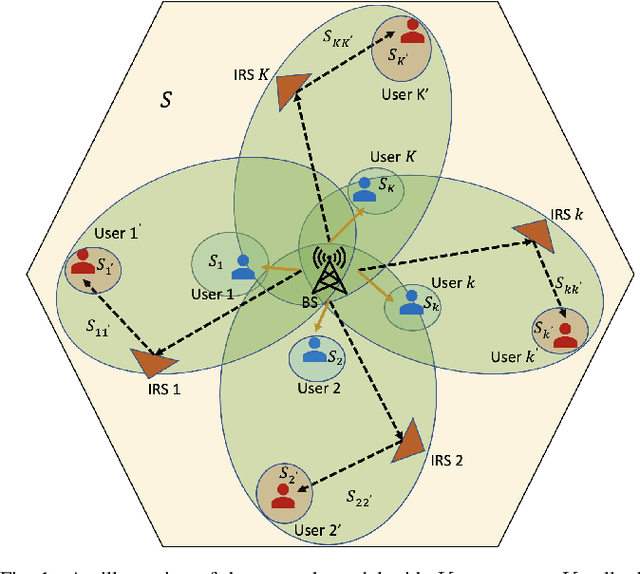
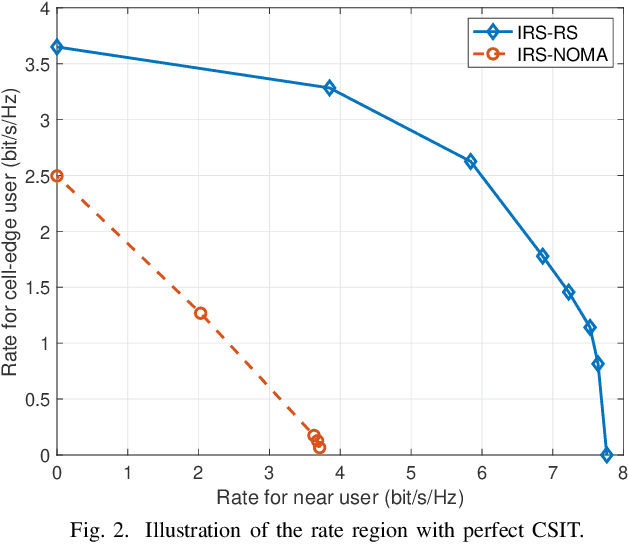
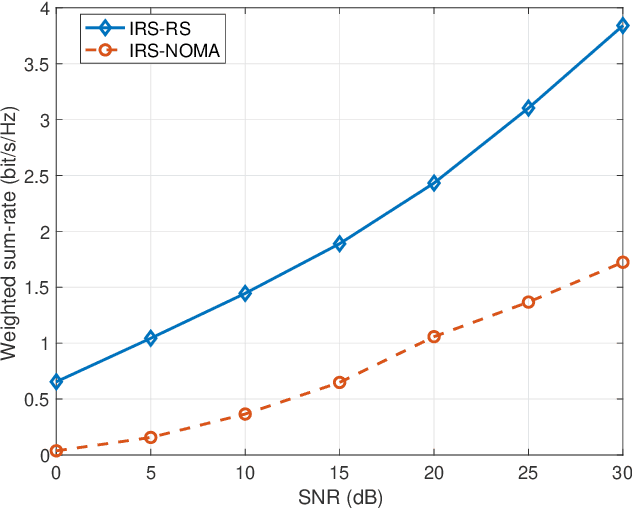
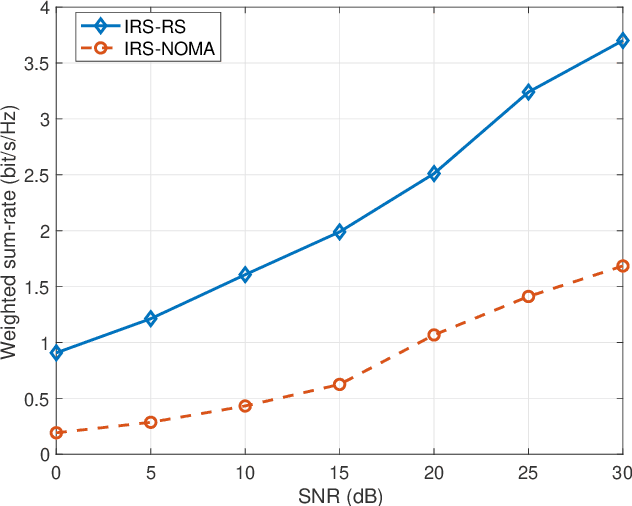
Abstract:Integrating intelligent reflecting surface (IRS) and Rate-Splitting Multiple Access (RSMA) is an effective solution to improve the spectral/energy efficiency in next-generation (beyond 5G (B5G) and 6G) wireless networks. In this paper, we investigate a rate-splitting (RS)-based transmission technique for an IRS-aided communication network involving both near and cell-edge users. In particular, we derive a new architecture called IRS-RS that leverages the interplay between RS and IRS, with an aim to maximize the weighted sum-rate (WSR) of users by selecting the reflecting coefficients at the IRS and designing beamformers at the BS under the constraints of power at the base station (BS), quality of service (QoS) at each user and finite resolution at the IRS. To solve the non-convex WSR maximization problem, we propose an alternating algorithm and compare its performance with baseline non-orthogonal multiple access (NOMA) based transmission for an IRS-aided communication network for both perfect and imperfect CSIT cases. Through numerical results, it is shown that the proposed IRS-RS architecture yields better QoS with respect to the cell-edge users when compared to IRS-NOMA transmission scheme.
Multiple Antenna Selection and Successive Signal Detection for SM-based IRS-aided Communication
Apr 28, 2021
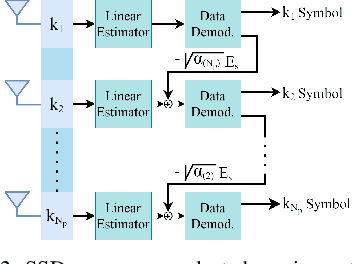


Abstract:Intelligent reflecting surface (IRS) is being considered as a prospective candidate for next-generation wireless communication due to its ability to significantly improve coverage and spectral efficiency by controlling the propagation environment. One of the ways IRS increases spectral efficiency is by adjusting phase shifts to perform passive beamforming. In this letter, we integrate the concept of IRS-aided communication to the domain of multi-direction beamforming, whereby multiple receive antennas are selected to convey more information bits than existing spatial modulation (SM) techniques at any specific time. To complement this system, we also propose a successive signal detection (SSD) technique at the receiver. Numerical results show that the proposed design is able to improve the average successful bits transmitted (ASBT) by the system, which outperforms other state-of-the-art methods proposed in the literature.
 Add to Chrome
Add to Chrome Add to Firefox
Add to Firefox Add to Edge
Add to Edge